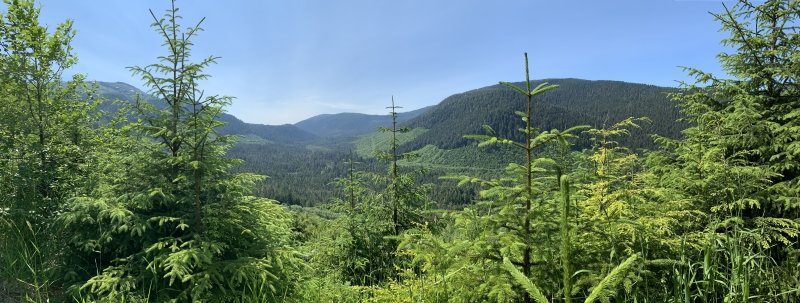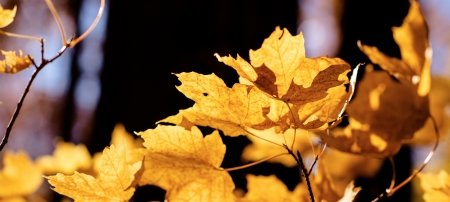Forests are the OG solar power, and in his guest blog, student researcher Nathaniel Prangley explains new techniques that help manage a longstanding renewable resource.
From the early days of Native American colonization, to the national industrial boom, forests have played a crucial role in the growth of society. Nearly all of today’s U.S. timber harvesting supports safe, sustainable practices for ecological processes in forests, while simultaneously supporting the country’s economy and infrastructure. The timber industry ranks among the top ten revenue producers, attesting to the crucial role logging plays in the upkeep of modern societal demands.
But timber harvest continues to gain opposition.
Out of Sight, Out of Mind
Today’s public ideology entails serious misconceptions regarding natural resources, especially in relation to U.S timber harvesting. Much of society associates logging with destruction, and believes timber harvest is an unnecessary process carried out as an act of greed. Additionally, many believe that this practice destroys a landscape’s ability to support trees, wildlife or fish in nearby streams and rivers. (Read: the whole plot line of Fern Gully). These misconceptions fail to acknowledge the numerous demands for wood products in modern day markets, natural forest regeneration following timber harvests, and the scientifically grounded and responsible management style current U.S. timber harvests are conducted under.
Misconceptions leading to regulations that weaken timber harvest have potential catastrophic effects including degradation of forest health, loss of everyday commodities and a hindered economic sector. Creating a sensible balance between managed forest areas for timber harvest and forest reserves is essential to the future of society and the natural world.
About the Researcher

Nathaniel Prangley
Bio
Nathaniel Prangley is an undergraduate student and research assistant at Michigan Technological University pursuing both a bachelor's degree in wildlife ecology and management, and a master's in forestry. Nathaniel is originally from Grand Rapids, Michigan, and spends most of his free time touring the Upper Peninsula on the road or snowmobile trail.
Increasing public awareness of the true practices and post conditions with timber harvesting will enable a transition in public perception from disapproval to a better-rounded acknowledgement of the many benefits and necessities of the logging industry.
A New Era of Management
The evolution of the modern timber harvest from early destructive logging is a concept that few grasp without firsthand experience. So, let’s travel to my home for the summer, the largest National Forest in the U.S., the Tongass National Forest of southeast Alaska.
Prior to any form of timber harvest, a handful of critical resource crews such as fisheries, wildlife, soils, geology, scenery and archaeology must visit and approve potential areas for timber harvest. Factors such as fish and wildlife habitat, sensitive soils and culturally significant sites are protected or excluded from timber sales, attesting to the deliberate care that has driven modern-day logging.
Looking across the U.S., timber operations have taken additional strides towards improvement based on scientific research. Wildfires, forest health, renewable energy and recreation all play a part.
Research has propelled a vast increase in the number of timber harvest methods, allowing harvests to be fitted for the site conditions of each location across the country. Forest regeneration has also been improved following timber harvesting, with many forests being followed by planting or thinning treatments. Some areas of the country have developed timber harvesting into an agriculture type process, creating rotations of harvest and growth periods.
School of Forest Resources and Environmental Sciences
More than 5,000 acres of University forests are set aside for research, education, recreation and outreach. We're a scholarly community on a first-name basis: mtu.edu/forest
Timber harvest research in fire-prone areas has initiated fuel reduction logging operations. This process aims to prevent catastrophic wildfires by reducing fuel loads. Not only does this process aid in preventing large wildfires, much of the material removed from these harvests provide biomaterials for local communities.
Recreation is an often-overlooked aspect of timber harvest benefits. Research has shown that timber transport provides numerous recreation opportunities by increasing accessibility to remote areas. Roads and trails created for timber harvests have the potential to connect rural towns and pose new trails for both humans and wildlife.
Logging practices can also combat climate change. New generations of forests sequester massive amounts of carbon dioxide, reducing greenhouse gas emissions throughout the atmosphere. Additionally, wildlife populations such as moose, deer, or elk facing climate pressures benefit from timber harvest, with new food sources following harvest areas in as little as a year. Logging meets many big picture landscape, environmental and societal demands, yet negative viewpoints continue to dominate social and political outlooks.

Logging Misconceptions
The root of the issue behind the lack of public knowledge surrounding modern day timber harvest is the absence of transparency in the logging world, due to the overwhelmingly negative stigma that has been placed on the timber industry. A large contributor to this stigma lies with a handful of sustainability organizations aiming to have timber harvests completely terminated.
These organizations focus on a handful of destructive logging cases, taken out of context of the vast majority of timber operations stride toward improved practices. It is important to understand that there will always be the possibility of destructive logging. Private land has the potential to offer high economic return to owners, meaning little to no prior assessment nor restrictions are implemented when performing timber harvest in these areas. This small fraction of destructive logging should not lead to the negative discrimination of the entire timber industry.
Solutions to counteract destructive private logging in the U.S. and abroad along with the promotion of the vast majority environmentally friendly logging operations should be a priority of sustainability organizations, political parties, and the public.
Today’s timber harvest operations continue to meet growing societal demands, while taking both the environment and scientific research into daily practices. Although a handful or organizations aim to decommission logging, public support recognizing the strides taken toward improvement of and dire need of logging is essential toward the future of the U.S timber industry. With continued improvements toward transparency, inclusion, and sustainability, we as a nation can begin to withdraw the negative perception of timber harvesting, promoting growth of U.S economy, and the most resilient renewable resource in our country, forests.
Michigan Technological University is an R1 public research university founded in 1885 in Houghton, and is home to nearly 7,500 students from more than 60 countries around the world. Consistently ranked among the best universities in the country for return on investment, Michigan's flagship technological university offers more than 185 undergraduate and graduate degree programs in science and technology, engineering, computing, forestry, business, health professions, humanities, mathematics, social sciences, and the arts. The rural campus is situated just miles from Lake Superior in Michigan's Upper Peninsula, offering year-round opportunities for outdoor adventure.






Comments